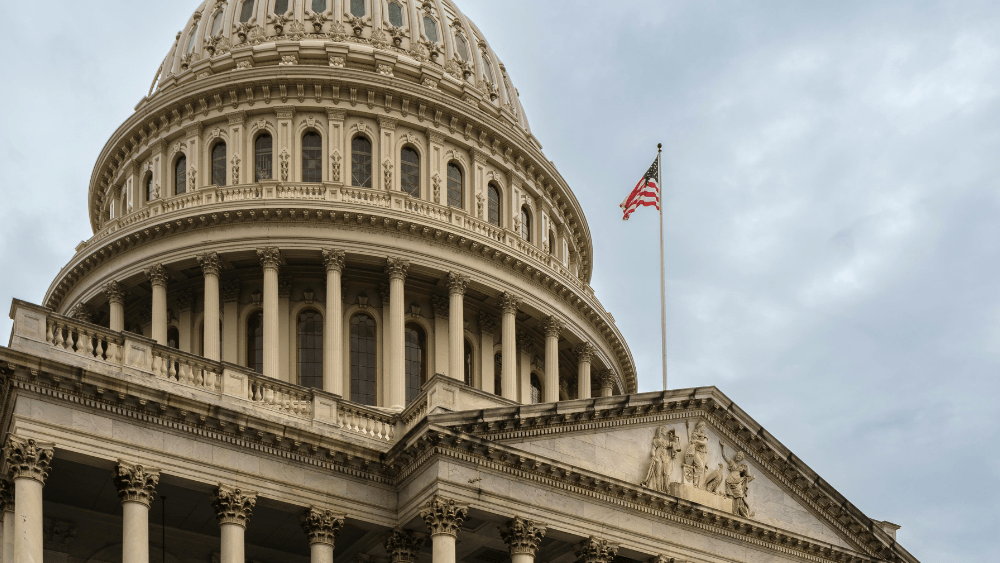Steve Hallstrom
Special to the Farmer
There may not be a more debated topic among North Dakota’s ag community than carbon dioxide and its various uses. But when it comes down to what is best for the state’s corn farmers, Jeff Zueger says there is no debate about new legislation coming out of Washington, D.C.
Zueger, CEO of Harvestone Low Carbon Energy Partners, which operates the Blue Flint ethanol plant in Underwood and Dakota Spirit plant in Spiritwood, and a director on the North Dakota Ethanol Producers Association (NDEPA) board, discussed the impact of the recent tax bill on AM 1090 The Flag.
The legislation, commonly called One Big Beautiful Bill, passed recently and Zueger says it offers benefits for North Dakota’s corn growers and ethanol producers, along with strengthening the state’s role in renewable energy.
North Dakota’s corn production has expanded significantly over the past 20 years. According to the USDA’s National Agricultural Statistics Service (NASS), in 2004, the state harvested 1.05 million acres of corn, yielding 113 million bushels at an average of 108 bushels per acre. By 2023, production soared to 543.4 million bushels from 3.8 million acres, with an average yield of 143 bushels per acre.
And the state’s ethanol industry has been eager to swallow it up. Currently, the state’s six ethanol plants consume approximately 210 million bushels annually, representing 40 to 60 percent of North Dakota’s corn output. Each bushel produces about 3 gallons of ethanol, 15 pounds of livestock feed, and up to 1 pound of corn oil (USDA NASS, 2024; North Dakota Ethanol Council, 2024).
Zueger detailed how the bill will help all these numbers stay strong. “Sure, so for us, there were a couple of really important pieces in the bill, primarily around carbon capture and storage and how we treat U.S. feedstocks, corn in particular, in the ethanol production industry. So we ended up coming out of the final bill with quite a few wins for our industry that we got to walk through,” he said.
The legislation builds on the Bipartisan Budget Act of 2018 and the Inflation Reduction Act, enhancing tax credits that support sustainable practices. Key components of the bill include the 45Q and 45Z tax credits. Zueger explained, “So 45Q is a tax credit that is tied to sequestration of CO2. So permanently storing carbon dioxide, and or beneficial use of carbon dioxide. So converting carbon dioxide into fuels, converting carbon dioxide into fertilizer. So 45Q previous to the One Big Beautiful Bill had tax credit levels that were lower than they are today.”
The bill increases these credits to $60 per ton for beneficial uses, such as enhanced oil recovery, and $85 per ton for sequestration, incentivizing investments in carbon capture technology.
The 45Z clean fuel production credit, extended through 2029, removes penalties like indirect land use charges that previously disadvantaged U.S. corn.
“And under the One Big Beautiful Bill,” Zueger noted, “it was extended to 2029, which was really good for our industry. And then also get away again, with direct land use. So 45Z clean fuel production credit takes into account farm practices all the way to tailpipe emissions for renewable fuel.”
These changes directly benefit North Dakota’s corn growers. By eliminating indirect land use penalties, which many say unfairly linked U.S. corn production to global deforestation, the bill ensures fair competition with countries like Brazil.
“The other piece that One Big Beautiful Bill did was kind of protect the U.S. feedstocks for things like sustainable aviation fuel and renewable base fuel,” said Zueger. “Up until that bill passed, Brazil was going to eat our lunch as it relates to providing ethanol for feedstock for staff.”
The bill mandates that renewable fuel feedstocks come from the U.S., Canada, or Mexico, figuring to support local farmers and rural economies in towns like Underwood and Spiritwood.
Zueger says the legislation also positions North Dakota to tap into the growing sustainable aviation fuel (SAF) market, saying that if you consider it as a 100 million gallon a year aviation fuel market that could be 50% renewable based, that allows for price strength for farmers wanting to sell their corn.
Despite these opportunities, some landowners remain wary of carbon capture due to concerns about CO2 pipeline safety.
Zueger addressed the issue.
“Well, I think it’s why we’d say that as perhaps you don’t understand the safety elements associated with long-term permanent storage of CO2. So, I think there’s some real benefits with demonstrating carbon capture and storage as it relates to long-term enhanced oil recovery.”





